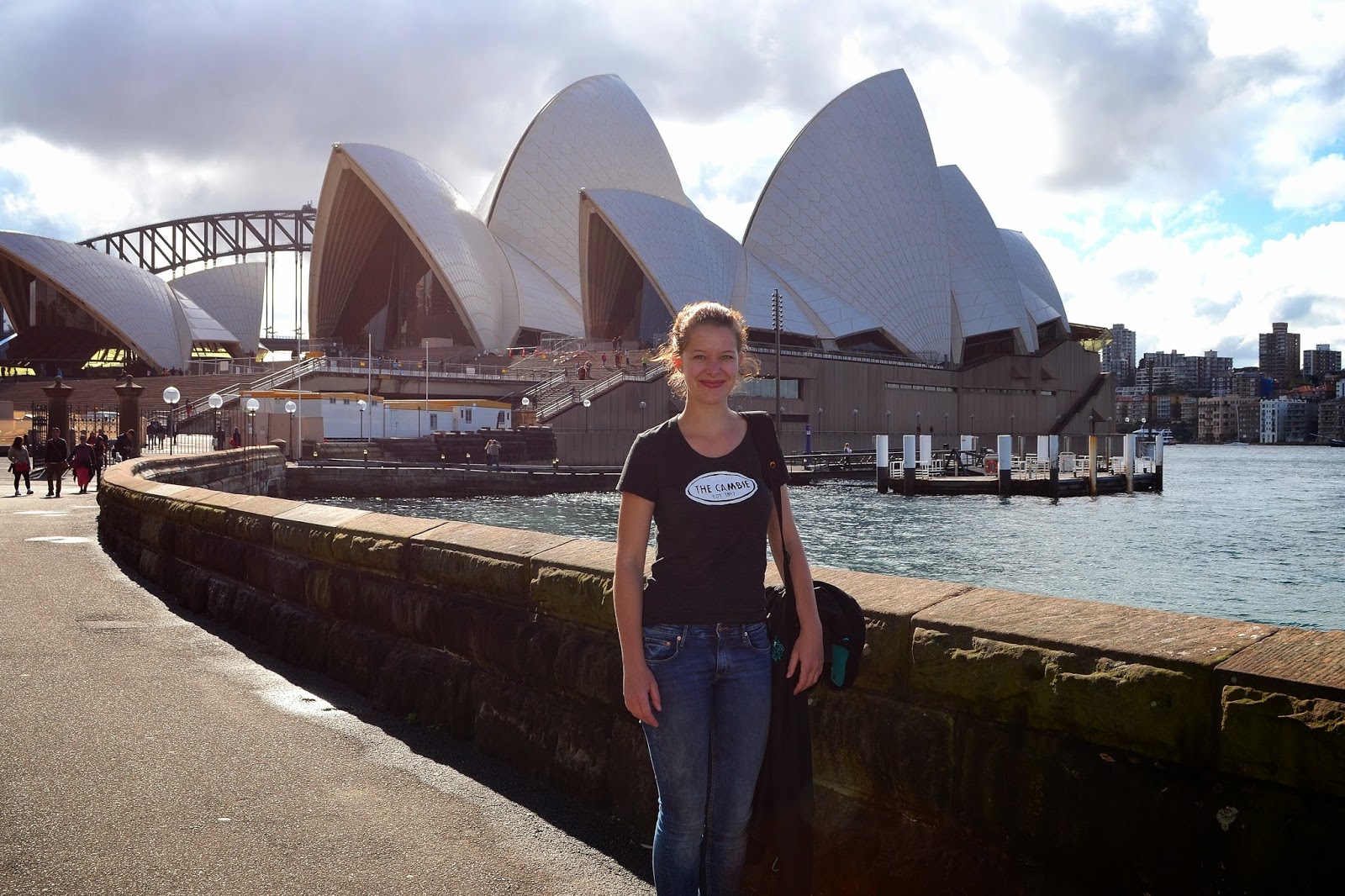
Smiling in Sydney
by Jenny Garratt
I have finally finished the Australia leg of my travels, bringing it to a close with an excellent week in Sydney! This week started with a visit to the War Memorial Hospital Day Centre where I spent time talking to Rod Escobar, the lead Diversional Therapist, and participating in some of the activities with clients. I was very impressed by what he told me about the training staff in the facility receive.
Everyone who works in the day centre, from the manager to the bus driver, attends many of the same workshops and training sessions. This ensures that each individual’s actions are underpinned by knowledge and understanding to promote positive interactions with clients at all points in their day centre experience. What it also does is increase the value of each individual and promotes the development of a connected team mentality rather than artificially pigeon-holing people into conforming to simply their ‘job description’. An example; last year all members of staff were involved in an art therapy workshop, led by a professional Art Therapist that sometimes works within the service with clients. Although not necessarily a skill that would be used by a bus driver, what is important is their understanding of the underlying concepts and why these kinds of interventions have value.
 |
| War Memorial Hospital Day Centre |
My next stop of the day was at the Diversional Therapy Australia (DTA) head office, where I met with Margie Kennard, the Office Manager. She gave me an excellent insight into the range of organisations that DTA connect with and also took me through the structure of the workshops and conferences they provide. I particularly liked the ‘Takeaway Café’ concept used in the workshops because of its emphasis on sharing practical knowledge, which is often something missing from these kinds of learning initiatives. Any member of DTA can apply to present at a workshop and this is a great opportunity to develop personal skills as well as share best practice. Margie also discussed the work of the Humour Foundation, the Arts Health Institute and the Dementia Collaborative Research Centre, all great organisations working towards common goals.
I then spent the next three days with the Aged Care Channel (ACC), who took me around the local area to meet some of their member organisations. ACC provide live broadcasting and a variety of learning resources to members, with about two thirds of all aged care facilities in the whole of Australia using their services. On Tuesday I spent the day with Bente Ryan, Senior Support Manager at ACCTV, and we visited the Play Up Programme (an initiative developed by the Arts Health Institute), in which trained performers, called ‘valets’, use humour therapy in health and aged care environments to bring joy and happiness to people. The programme was developed on the findings of the SMILE study, which found that using humour therapy in residential care could reduce agitation by 20% and should therefore be considered as a viable psycho-social intervention before medication is used.
We observed one of the valets, Maurie, in action and the genuine connection he developed with the residents was a joy to behold. Staff members are also included, with a small number in each facility being trained as ‘Play Up Partners’ who carry on the work in between visits from the valets and after formal programmes have been completed. Through mentoring from the valets, they are encouraged to find their own style and play to their strengths to reinforce the feeling of fun in their facility. It was evident that picking the right Play Up Partners can have a huge impact on the effectiveness of culture change. They are the role models for other staff members and need to be willing to share ideas and information with their team. The whole experience was extremely moving for me personally and I decided that it wasn't appropriate to take pictures of the Play Up Programme in action for a number of reasons. Not only were many of the people we visited receiving end of life care, but I also didn't want to distract them from the programme as it was clear that everyone who Maurie came into contact with had their day brightened and enriched.
 |
| Aged Care Channel Control Room |
 |
| Sydney Tower |
Having been given the opportunity to look through some of their training content, as well as observe the live broadcasting of ‘Clinical Skills: Recognising and Managing Sleep Disorders’ on the day, I came away extremely impressed by the quality of the subject matter and filming. A storytelling methodology is used throughout and reflection is encouraged, ensuring that viewers are engaged with the content. Using a variety of different viewpoints, including clients, family members and carers, gives viewers a clear progression through the logic behind decisions and promotes a deeper understanding of the topics. After the last broadcast had come to a close, Karen Martin, Strategic Development and Partnerships Manager for ACC, whisked me off into town for dinner in the Sydney Tower, a rotating restaurant with an amazing view of the city. A lovely treat!
Karen and I then spent Thursday visiting two Living Care facilities. What I found particularly interesting was the importance attached to transformational leadership as a key factor that has contributed to culture change within the two facilities. The leader’s role was not only to inspire, but to encourage a culture of continuous training in staff members. In the second complex we visited, the full time Diversional Therapist, Lindy Junkkari, explained how her role had developed within the last 5 years. She now manages 8 Recreational Activities Officers (RAOs) who provide a huge range of creative activities and events for the 150 residents. The diversity of what they offer was extremely impressive, with their repertoire including qualified puppeteers, beauty therapists, animal therapy, bus trips, community visitors scheme, volunteer groups, art therapy and the ‘grow and hatch’ programme which involves caring for chicken and duck eggs.
All RAOs have a Certificate Level 4 in Leisure and Lifestyle and have quarterly resident meetings to discuss the schedule as a collective and see if any changes need to be made. Lindy also told me about their annual Leisure and Lifestyle Forum that all the DTs and RAOs throughout the whole organisation (11 sites in Australia) attend. Its focus is on networking, sharing ideas and education, with previous sessions including dramatherapy, person centred care, modifying activities and animal therapy. I am particularly interested in finding out more about the Certificates in Leisure and Lifestyle and, although I did not get the opportunity to go in person, Karen has kindly offered to email me the details of the local college who developed the accredited framework. Watch this space!
On my last day I met with Joanna Jaaniste, principle of the Dramatherapy Centre in Sydney. Dramatherapy uses theatre techniques to facilitate personal growth and help individuals achieve therapeutic goals by providing them with context through which they can tell their stories and express feelings. The Dramatherapy Centre offers unaccredited training for professionals interested in developing their understanding of the practice and Joanna described how initiatives are often jointly owned by professionals and staff members. She particularly emphasised the importance of giving potential participants the opportunity to ask questions about the process beforehand as many can be put off by the word ‘therapy’, fearing they are going to be critically analysed. Training for staff and carers is crucial so they can explain the process, ensuring that everyone is aware of what happens and can support individuals outside of sessions.
And that was my week! Apologies that my blogs seem to be getting longer and longer. I think that, apart from anything else, this is a great way to record and distil my own thoughts. I’m sitting on yet another plane, on my way to New York, and will update you with my findings next week after seeing the Big Apple!






.JPG)
.JPG)
.JPG)